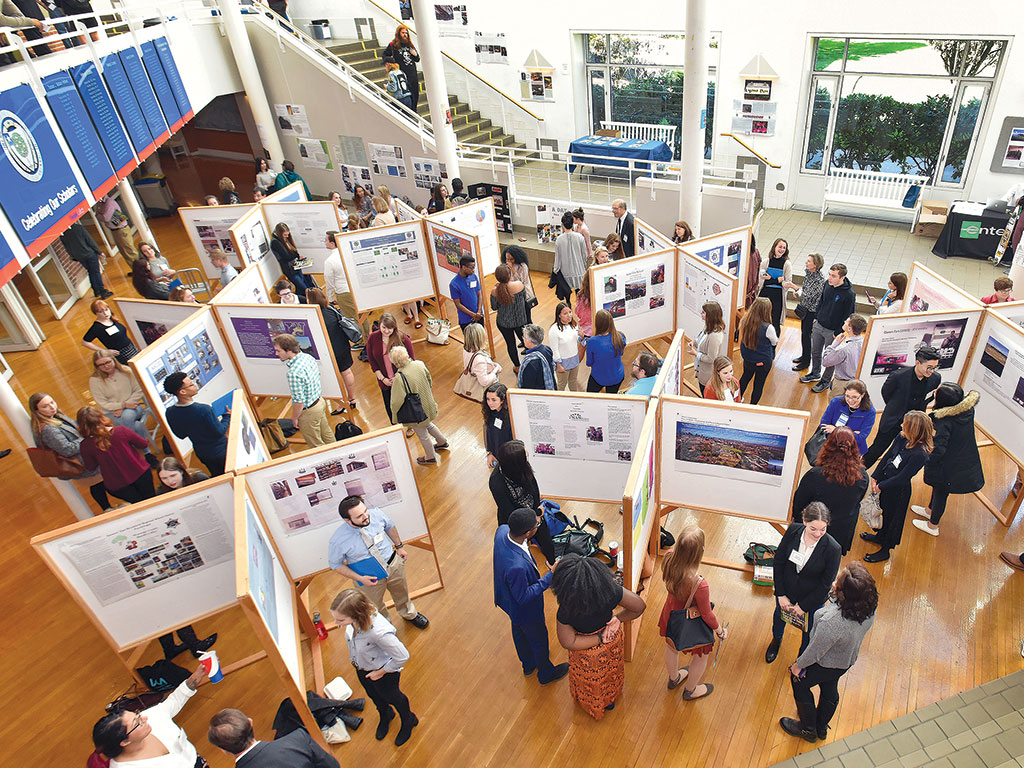A portfolio of options

Findings from a recent survey caught my eye. More than 90 percent of business executives and hiring managers agreed that they preferred to hire people who had participated in internships or other forms of experiential learning during their college career.
The results come from a pair of surveys that were commissioned by the Association of American Colleges and Universities, a national group that promotes the value of studying the liberal arts and sciences. In recent years, the association has conducted studies that highlight the importance of high-impact educational practices—courses tailored to first-year students, collaborative assignments and projects, diverse learning communities and undergraduate research.
The survey’s findings on the value of internships is welcome, but it is not news, at least not at Wheaton. Experiential learning has a long history at the college, stretching back to Catherine Filene Shouse, a member of the Class of 1918 who organized a vocational conference on the campus in 1917. That event continued annually for more than three decades. In 1986, the college established its career services center with the goal of making internships and experiential education central to each student’s educational experience. At the time, this was a bold, innovative move for a liberal arts college. But it was brilliant in helping students connect their academic passions to personal and professional goals. Wheaton’s commitment to combining scholarship and applied learning has only grown.
Today, Wheaton promises every student the opportunity to participate in a funded internship, setting aside more than $1.2 million every year to back up that guarantee. That support is key. It allows students to pursue a good opportunity for learning, even if it is unpaid. For some students, those $3,000 to $5,000 stipends are essential to replace what they would otherwise earn at a summer job or to allow them to live away from home for the summer.
The fruits of that investment are on display each fall when the college hosts the Internship Showcase, providing students with the chance to share what they have learned and to inspire their peers. It is an incredible exhibition of the breadth of Wheaton students’ interests and capabilities—from financial investment firms to human service agencies, research laboratories to field research at sites around the globe. In some instances, students use the college’s support to pursue an independent academic project or to further develop plans for a social innovation venture that began through participation in one of our social entrepreneurship programs.
The wide variety of choices and flexibility that Wheaton offers students in putting learning into action is distinctive, and it is part and parcel of the personal approach to education that is our hallmark. The myriad options that are available reflect the varied interests of students. And it’s a perfect match for the college’s expansive curriculum, which spans more than 100 majors and minors in the liberal arts and sciences. The college helps to ignite the spark of possibility for every student.
Wheaton’s promise—more options, more possibilities and more experiences for students to develop their abilities as leaders and changemakers—is its power. By connecting students to a world of possibilities, the college drives social innovation and positive change. It’s an inspiring mission.
